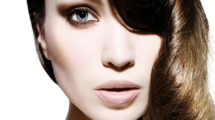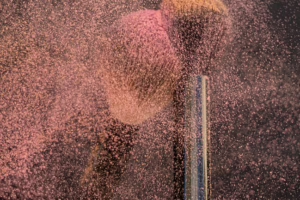Unraveling the Timeless Charm of Beauty and the Beast: A Story for All Ages
Introduction
The tale of Beauty and the Beast has enchanted generations for centuries, weaving a narrative rich in themes of love, sacrifice, and redemption. Originating from folklore and evolving through various adaptations, the story’s enduring appeal can be attributed to its universal themes and moral complexities. This article seeks to explore the various layers of "Beauty and the Beast," examining its historical roots, thematic depth, and its impact on culture and society.
Historical Background
Origins in Folklore
The roots of "Beauty and the Beast" can be traced back to traditional folk tales that date back thousands of years. Versions of the tale have been documented across various cultures, illustrating a deep-seated fascination with the motif of transformation and the complexities of human relationships. One of the earliest known forms comes from ancient Greece, featuring similar themes of punishment and redemption. However, the most recognized literary version emerged in France.
Gabrielle-Suzanne Barbot de Villeneuve, an 18th-century novelist, published the first written version of "La Belle et la Bête" in 1740, but it was Jeanne-Marie Leprince de Beaumont‘s 1756 abridged version that truly captured the essence of the tale and popularized it. Beaumont’s version streamlined the story, focusing on the moral aspects, particularly the importance of inner beauty over outer appearance.
Evolution through Adaptations
Since Beaumont’s time, "Beauty and the Beast" has undergone numerous adaptations across various media, including film, theater, and literature. The Disney animated film released in 1991 introduced the tale to a new generation, blending musical elements with a vibrant visual aesthetic that emphasized character development and emotional depth. Additionally, the live-action remake in 2017 further cemented the story’s relevance for modern audiences.
Themes and Symbolism
Love and Redemption
At its core, "Beauty and the Beast" explores the transformative power of love. The relationship between Belle and the Beast serves as a centerpiece for illustrating how love can transcend external appearances and societal norms. The initial perception of the Beast as a monstrous figure represents the preconceived notions that people often harbor about those who appear different.
As the narrative unfolds, viewers witness how Belle sees beyond the Beast’s exterior, allowing for a profound connection that ultimately leads to the Beast’s redemption. This theme resonates universally, reminding audiences that true beauty is found within.
Sacrifice and Growth
Another significant theme in the story is the concept of sacrifice. Both Belle and the Beast make sacrifices throughout their journey. Belle sacrifices her freedom for her father, choosing to save him from the Beast’s captivity. The Beast, on the other hand, sacrifices his freedom for the sake of Belle, ultimately allowing her to leave when she expresses her longing for her father.
These sacrifices serve as catalysts for personal growth. Belle learns about courage and resilience, while the Beast undergoes emotional and psychological transformation, shedding his former self to become a loving partner. The character development of both leads emphasizes that love often requires personal growth and vulnerability, creating a connection that is both deep and meaningful.
The Role of Society
"Beauty and the Beast" also scrutinizes societal expectations and norms. Belle, characterized by her intelligence and independence, stands in stark contrast to the expectations placed upon women in her society. The townspeople view her as an outsider, and her love for reading and yearning for adventure sets her apart.
The Beast, too, represents societal rejection due to his monstrous exterior. Through their relationship, the story champions the idea that individuals should not be judged by societal standards or superficial attributes. Instead, it advocates for acceptance and understanding as pivotal aspects of human relationships.
Cultural Impact
Literary Adaptations
The timeless appeal of "Beauty and the Beast" has led to numerous literary reinterpretations that continue to engage audiences. Novels such as "A Court of Thorns and Roses" by Sarah J. Maas and "The Beast Within" by Serena Valentino offer fresh takes on the classic tale, exploring alternative narratives and developing backstories for characters. These adaptations highlight the malleability of the story, allowing it to resonate with contemporary readers while maintaining its core themes.
Film and Television
The cinematic adaptations of "Beauty and the Beast," particularly the Disney version, have significantly shaped cultural perceptions of the tale. The 1991 animated film was a groundbreaking achievement, being the first animated feature to be nominated for the Academy Award for Best Picture. Its success reignited interest in animated storytelling and established Disney as a powerhouse in the animation industry.
The film’s memorable soundtrack, composed by Alan Menken and Howard Ashman, further solidified its impact. Songs like "Beauty and the Beast" and "Something There" encapsulate the emotional depth of the characters and cemented the story’s place in modern pop culture. The live-action adaptation in 2017 introduced new elements while remaining faithful to the original narrative, ensuring that the story continues to evolve while retaining its charm.
Themes in Modern Society
In today’s world, the themes present in "Beauty and the Beast" continue to resonate. Issues surrounding self-acceptance, mental health, and societal norms are more prominent than ever. The story’s exploration of inner beauty, self-worth, and the complexities of relationships can foster important conversations around acceptance and understanding in a diverse society.
In a time when social media amplifies superficial judgments, the message of looking beyond appearances has become increasingly relevant. As audiences engage with "Beauty and the Beast," they are reminded of the importance of empathy and compassion in a world that often prioritizes outward appearances.
Conclusion
"Beauty and the Beast" remains a beloved tale, captivating audiences with its timeless themes and poignant messages. Its rich historical roots, coupled with its varied adaptations, showcase the story’s ability to transcend time and cultural boundaries. By exploring the complexities of love, sacrifice, and societal norms, the story encourages individuals to embrace their imperfections and seek deeper connections. Whether through literature, film, or theater, "Beauty and the Beast" continues to inspire audiences of all ages, leaving an indelible mark on the cultural landscape.
While the story may be set in a fantastical realm filled with magic and wonder, its lasting impact reminds us that the most profound stories often reflect the struggles and triumphs of the human experience. Embracing the alluring charm of "Beauty and the Beast" allows us to journey through our own lives, armed with the wisdom that true beauty lies within.


























Add Comment